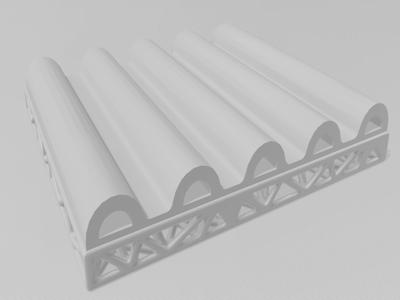The smart stent´s main aim is to reduce the blood clogging on the stent itself.
It achieves it by replacing the normal stent design with tubes, filled by liquid. The liquid´s pressure is median of patient´s blood flow. Blood flow of the patient puts the liquid in tubes under pressure, which in turn causes liquid to flow from one end of the tube to the other end and back, continuosly causing the tubes to vibrate along it. Tubes are connected to each other with flexible material, which causes them to microvibrate sideways. With the vibrations in two different directions we hope to achieve reduced blood cloth,by not letting it form on the stent.
Smart stent is build with color-emiting algae and with color detecting sensor inside the stent itself we are able to monitor whether blood clogs are forming and notify the patients if he/she needs to seek further medical help. Sensor would be powered by dynamo inside the tubes and the signal would be sent once a week with low-energy module such as bluetooth. In case of emergency, there would be additional warning message sent.
Stent itself is not closed circle, which makes it easier for the stent to be injected properly in veins varying in sizes.
Before the angioplasty, stent is rolled onto the catheter, which is standard procedure. After being placed in the right place, baloon is blown and the stent itself latches onto the artery.
Thickness of the stent is 0,09mm and with lettice structure on the outer side of stent we achieve reduced friction on the vein and more stability without hindering vibrating of the device.
The picture is upscaled, so that it would be printable. In reality stent contains about 106 tubes.
Printable dimentions for the left anterior descending artery, which has mean diameter of 4mm +-0,28mm:
-width 10.676mm,
-106 printed tubes with 0.08mm diameter,
-distance between tubes 0.02mm,
-lenght up to 40mm, depending on patient´s need,
-height up to 0.09mm, depending on used mesh.

Medical tags
- Clinical need
- Prevention of pathology or disease
- Area
- Cardiovascular surgery
- Technology
- Implantable device
- Project keywords
- 4D printing, stents, blood clothing, pressure, smart, smart measuring device, ATHENTS SPRING 2023, group 5
- Device classification
- III